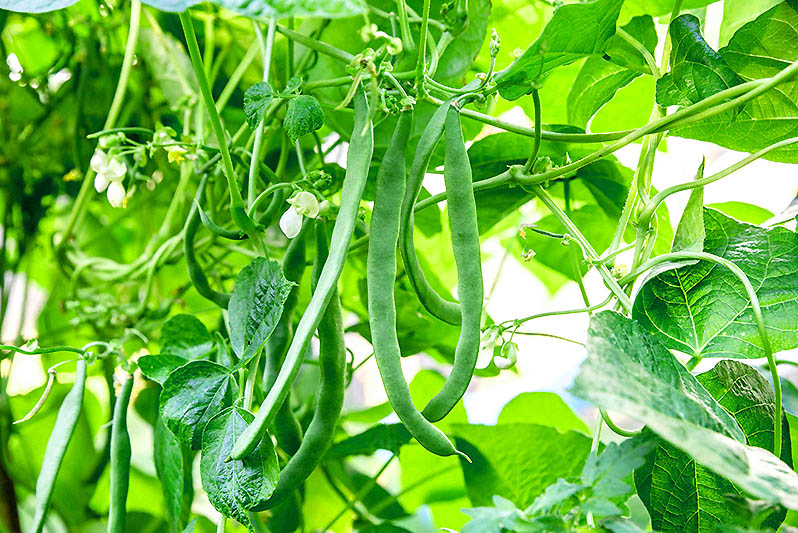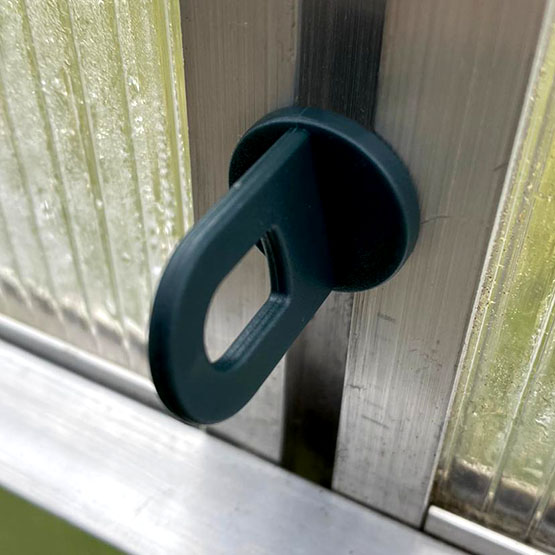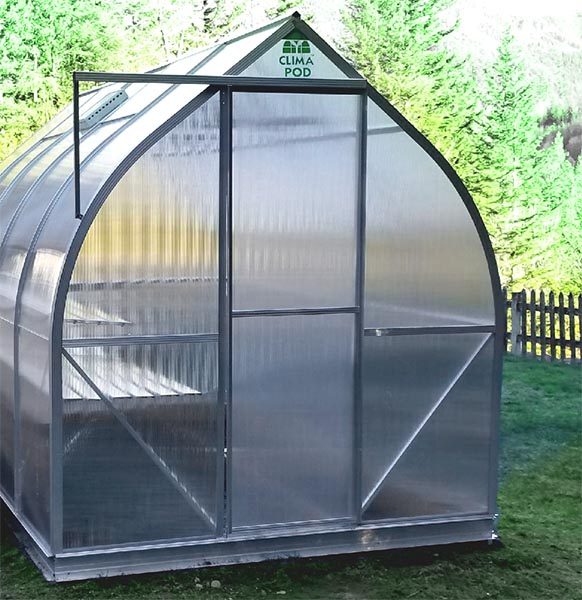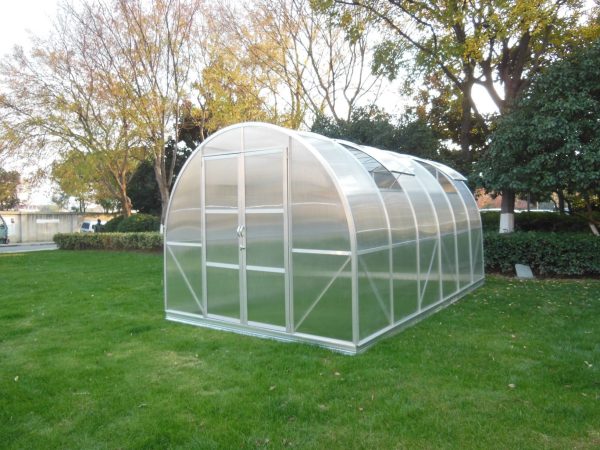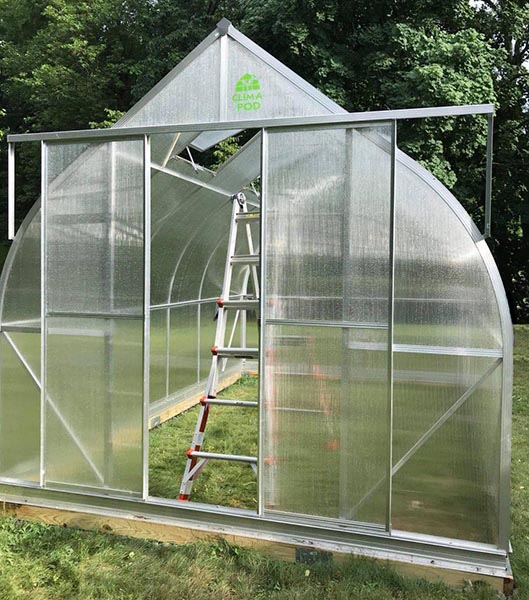Why is growing beans in a greenhouse a good idea? Beans are a valuable leguminous plant intended for cultivation not only outdoors, but also in greenhouse conditions. Covered soil allows harvesting regardless of weather conditions and provides the most favorable environment for the growth and development of pods.
Features of growing beans in a greenhouse
Regular beans are compact. He needs a very small area for growth and fruiting. And by allocating a small space in the greenhouse, you can really take two crops of pods – early and late.
For green beans with the same yield, a large area is needed, but it is convenient for harvesting. Dozens of pods grow in clusters on a small bush.
Features of growing beans in a greenhouse:
- In a greenhouse, the legume does not need pollinators, as it is a self-pollinating crop;
- sowing beans in late winter or early spring requires a heated greenhouse.
Thanks to the closed ground, you can get early beans: gardeners harvest the first crop about a month before the appearance of soil pods. Early beans are often grown for sale, as they are much more expensive in early summer than in mass ripening.
Choosing a variety for growing beans in a greenhouse
While beans are not considered a particularly fussy plant, it is not recommended to grow the first varieties you meet in a greenhouse. Choose legumes that perform well in greenhouse cultivation.
Curly
Curly beans, unlike green beans, can drag on supports and nets. In the open field, it is often used as a garden crop and as a decorative decoration for fences.
The best varieties of curly beans for internal use are:
- Lago Blue. A highly productive variety of asparagus. You need supports and pillars to grow. Plants are vigorous, well leafy, up to 3 m tall, pods are dark green, thin (up to 1.1 cm in diameter) and long (up to 15 cm). Medium sized, white beans.The variety is distinguished by high taste and yield. Designed for fresh and processed consumption. Resistant to fungal and viral diseases.
- Cobra. This is a British variety of asparagus with delicious and tender pods. Differs in high productivity, duration of fructification, the big force of growth. The pods are green, juicy, rounded in cross section, up to 18 cm long.
The grains are cylindrical, slightly curved, black in color, with a glossy sheen. It blooms with lilac flowers – looks beautiful in flower beds and pots. They are planted in greenhouses in early spring.
Shrub
Small bushy varieties. Bushes reach no more than 0.6 m in height. They don’t need support. They are actively grown on a large scale – for the food industry.
Most varieties of shrubs have excellent agricultural characteristics. They are productive, frost-resistant, early ripening, unpretentious, cold-resistant.
The best varieties of green beans for internal use:
- Golden wigwam. Very early variety for general use. Suitable for fresh consumption – in the composition of dishes and for canning. The pods are golden, without shine, up to 16 cm long, 1 cm in diameter.
The variety has a long period of flowering and fruiting. Shows tolerance to bean mosaic virus. - Teepee Purple. An early ripe variety with low bushes – up to 40 cm. Each plant has about 15 dark purple pods. They reach a length of 12-14 cm and turn green when cooked. They do not have a parchment layer, they are distinguished by high taste qualities. The pods are widely used in cooking, pickled, frozen.
- Ferrari. Asparagus is a mid-late Polish variety. Differs in high productivity. The bushes are erect, up to 40 cm high, the pods are green, fleshy, sweetish, up to 14 cm long, without fibers and without a parchment layer. The taste is excellent. The beans don’t get rough for a long time.
The variety is resistant to diseases and stresses, easily adapts to new conditions. The purpose is universal: for use immediately after removal from the bush and for storage.
Soil requirements for growing beans
The soil in the greenhouse is prepared in advance by applying fertilizers and, if necessary, compounds that improve its quality and structure. What kind of soil do beans prefer:
- with high humidity;
- type – chernozem, loam, sod-podzolic;
- fertility is high, preference is given to organic products;
- acidity – neutral or slightly alkaline (beans do not grow on acidic soils);
- structure is loose.
For deoxidation of the earth, wood ash is used – 200-300 g per 1 sq. It is distributed over the surface and mixed thoroughly.
Beans requirements for the microclimate in the greenhouse
In order for the beans to grow in the greenhouse as well as in the southern regions under the open sky, it is necessary to create a favorable microclimate.
Greenhouse features:
- Lighting fixtures. Harvested on a short day. At an early stage of growth, the recommended length of daylight hours is up to 12 hours. Under such lighting conditions, plants quickly move to the fruiting stage. Beans grow later with longer exposure.
- Temperature.The optimal temperature regime for growing beans is + 22 … + 23 ° C. The greenhouse must be ventilated daily.
- Humidity. The ideal level for air is 50-60%, for soil – 70-80%. The soil at night should be as dry as possible, since when the temperature drops, high humidity causes plant diseases. Too dry air promotes the appearance of aphids and spider mites.
Bean sowing dates
Legumes are sown based on soil temperature. As soon as it warms up to + 10 ° C, work begins. This rule is true for any terrain, internal and external.
Greenhouse beans are sown in late February – early March (plus or minus two weeks depending on the region). In case of landing in February, additional artificial lighting will be organized. In unheated greenhouses, beans are sown around mid-April.
Best neighbors and predecessors
In the greenhouse, the rules of crop rotation and neighborhood are taken into account. Failure to comply with them increases the risk of diseases, leads to a decrease in yield.
Green beans grow best after:
- carrots;
- beets;
- bow;
- cucumbers;
- pepper;
- eggplant;
- cabbage;
- tomatoes;
- potato.
Beans go well with potatoes, cucumbers and strawberries. They require exactly the same growing conditions as legumes.
But even if a gardener has a greenhouse and wants to grow several crops that require a different microclimate, there is a way out. To do this, zoning is carried out using a film.
Methods of planting beans in a greenhouse
Beans are sown in greenhouse soil in two ways: from seeds directly into greenhouse soil or from seedlings. In any case, the semen must be prepared – calibrated and soaked. It is not forbidden to plant dry beans, but they will germinate longer.
Seedling method
A heated greenhouse allows you to keep seedlings right in it. If the greenhouse is not heated, bean seedlings are left at home. Sowing is carried out at the end of winter.
Ascending:
- For planting, take large beans without defects. Disinfect them for half an hour in potassium permanganate – dilute 1 g in 1 liter. Rinse and soak in warm water for 10-12 hours. But no more, otherwise the seeds will turn sour. Remove and wrap in a damp cloth and store in a warm place.
- Don’t wait for long shoots to grow. As soon as the seeds hatch, start sowing. Do not forget to harden the seeds – put them in the refrigerator for 6 hours.
- Plant the beans in individual glasses or peat pots. The diameter of the container does not exceed 8 cm. Fill empty containers with a substrate or homemade soil mixture from garden soil (2 parts), peat (1 part) and humus (1 part).
- Before sowing, moisten the soil in glasses. Add 3-4 cm seeds. If there are many beans, plant two at a time, and when sprouts appear, evaluate them and remove the weaker one. Cover the glasses with foil to create a favorable microclimate.
- Store the container in a well-lit place – on a window or in a greenhouse at a temperature of + 16 … + 18 ° C.
- About a week before transplanting indoors, transfer the seedlings to the greenhouse to adapt to new conditions. Having got used to changes, seedlings more easily endure the stress of changing their “place of residence”. This rule applies when seedlings are grown outside the greenhouse.
- Transplant seedlings into prepared beds, observing intervals: 15 cm when planting shrub varieties, for climbing varieties – leave intervals of 20 cm. Prepare holes a little larger than the planting capacity.
For germination, seeds no older than two years are used. Then their germination decreases.
Video about sowing beans for seedlings:
If you do not want to mess with seedlings, beans can be sown directly into greenhouse soil. This option is especially useful in heated greenhouses.
How to sow beans in a greenhouse:
- Loosen the soil and fertilize. Disinfect the soil, including the purchased one. Pour 2 ml of phytoflavin solution into 10 liters of water. If it’s time to change the soil in the greenhouse, prepare a mixture of homemade garden soil (1 part) and turf (2 parts), humus (2 parts), peat and sand (1 part each).
- Prepare the soil for planting: lay out a new layer of 10-15 cm. Sprinkle each layer with phosphorus-potassium fertilizers – 20 g – per 1 sq. kg per 1 sq.m, ash – 200 g per 1 sq.m) and mineral fertilizers (phosphate, potassium sulfate, potassium salt or nitroammofoska according to the instructions.). Dig everything well.
- Smooth out the prepared bed with a rake and make grooves. The distance between adjacent rows is 30-60 cm. Lay out dry or germinated seeds in prepared strips at an interval of 15-20 cm. Planting depth 3-4 cm.
- Water the crops and sprinkle with soil, peat, mulch. If climbing varieties are planted, install supports immediately.
Use peat with care as an ingredient in soil improvement. Some of its species increase the pH level.

